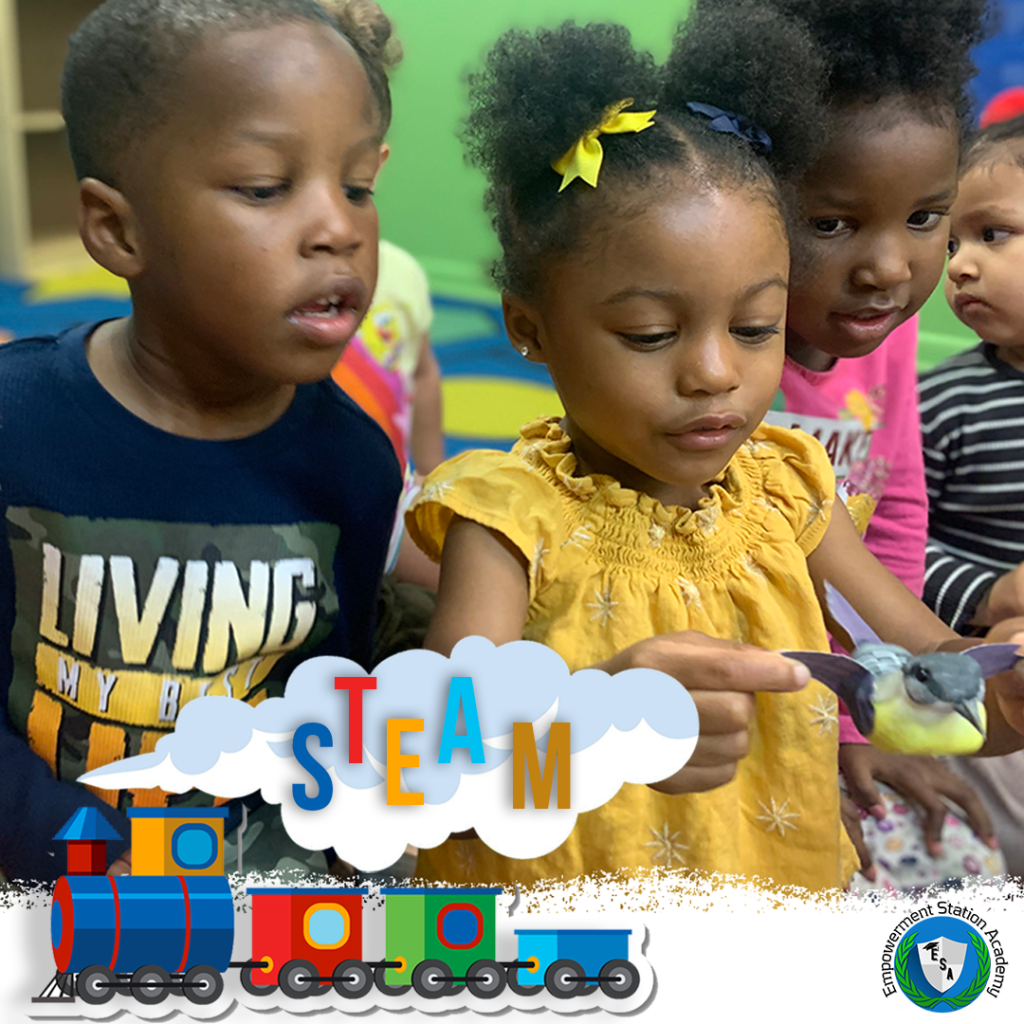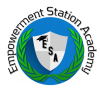- +1 662 617-8303
- empoweredforlifeinc@gmail.com
- Mon - Fri: 6:30 AM - 6:00 PM
Full STEAM Ahead
Full STEAM Ahead
May 5, 2022
All aboard the E-Train from the Empowerment Station Academy! Our destination will be a fun-filled adventure where learning is a collaborative effort between students and the world in which they live, learn, and grow. You will learn more about the exciting world of early childhood education as we prepare to move forward “Full STEAM Ahead”!
What is STEAM?
Education processes and concepts are constantly evolving. Today, many educational institutions are implementing what is known as STEAM education. The word STEAM itself is an acronym that stands for Science, Technology, Engineering, the Arts, & Mathematics. The basic premise of STEAM education is to guide inquiry, dialogue, and critical thinking among students using a process-oriented style of hands-on, experimental learning. To help fully encapsulate what STEAM education is all about and why it can help create a clear path to learning success, let’s further explore this concept through the process for which STEAM education is typically designed. This article shall be presented in a STEAM project format to help understand the concept using inquisitive research, asking, and answering questions, and thinking critically about the outcomes. Moreover, it will help readers gain an understanding of the ways in which a STEAM education format can help students develop a broader perspective and deeper appreciation for the benefits of a well-rounded education. This article will present a task in the form of a project to the reader and help guide them using a STEAM-based learning and discovery process.

STEAM Project-Based Learning
As a reader trying to learn more about the STEAM learning initiative, we will use a simple imaginary project to take you through each step of the process. Imagine you are the teacher in your child’s classroom. The project at hand is to create a lesson plan for one week that involves STEAM-related objectives for learning. Your task is to plan, create, and implement the lesson plan. Once you finalize your plan, you will implement it daily with the students. The plan should incorporate ways for problem exploration, design, planning, measuring, and recording observations. You, yourself, will need to create a way to measure the progression of the students throughout the week. Monitor, observe and record your observations regularly.
Your plan should incorporate hands-on experiments that allow the children to explore the world through science, technology, engineering, the arts, and math. For example, a recent classroom activity conducted at ESA involved learning about birds. The children explored the fun and amazing world of birds while learning about their habitats, nesting, how they lay eggs, and even the pink worms many of them eat. To further incorporate STEAM-related learning styles, your plan may incorporate a similar activity and include data analysis, and a means by which to record and report them should be implemented as well. Students could also share a show and tell time where a pet parakeets and other pet-friendly birds can be brought in. They can use a hands-on approach by touching the birds, examining their feathers while counting how many are on each wing, and comparing the colors and other distinctive characteristics of each bird.
After exploring birds and their habitats, the children can be asked to use their imagination and draw pictures of them in their natural habitats. They can incorporate elements of engineering by constructing their own versions of nests using wooden twigs and mud.
You can use your own creativity and expertise to develop your lesson plan that incorporates each of the elements of STEAM learning objectives. Always consider the learning objectives that help build inquiry, process, and critical thinking as the building blocks.
STEAM for Success
Let’s break down the steps to creating a STEAM lesson plan. First, focus on a question that needs answering. Next, consider the factors that make up the problem. Then think about the hands-on research phase. This involves finding the answers to the question or solutions to the problem. Afterwards, find ways to apply the answers or the solutions. Next, students should be able to present their findings and overall conclusions to the proposed problem. Lastly, students should ponder their findings and consider making improvements to maximize the functionality of the project. These steps are essential in ensuring the students are fully immersed in the interrelated subjects of STEAM education. Educators from various fields must collaborate and find ways to incorporate the different subject areas into one overall project.
Rest assured that other subjects that are not included in the acronym are also strengthened as part of the STEAM learning process. Literacy, social studies, history, and language arts skills are sharpened as part of a well-rounded system.
One of the major learning benefits of implementing a STEAM-based learning program is giving students the ability to be creative and exercise critical thinking. Outcomes can vary based on a student’s own exploration process and their individual perspective.
Conclusion
STEAM education has become an education buzzword, but make no mistake, the process of implementing a successful program calls for much planning, creativity, critical thinking, and strategic implementation. In order to help students develop a full, calculated understanding of the world around them, a well-rounded STEAM project should allow students the opportunity to strengthen their critical thinking, reading, writing, scientific reasoning and research, and math skills. It’s vital for students to learn how to evaluate problems, think critically about solutions, measure the results of their conclusions, and effectively communicate their findings. STEAM-based learning programs, when implemented correctly, grant students the opportunity to learn and explore from a hands-on perspective. This is beneficial to our society, as it helps produce leaders who can excel at thinking, comprehending, and actively searching for and finding solutions.
For more information about ESA, and to find out why we offer the perfect solution to meet your child’s early childhood development needs, please contact us at (662)694-9594 or (662)617-8303. You can also email us at empoweredforlifeinc@gmail.com. Contact us today!
We currently have 2 locations to conveniently serve you:
ESA Starkville
732 Whitfield St
Starkville, MS 39759
